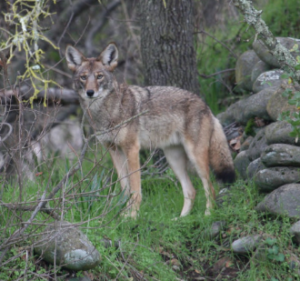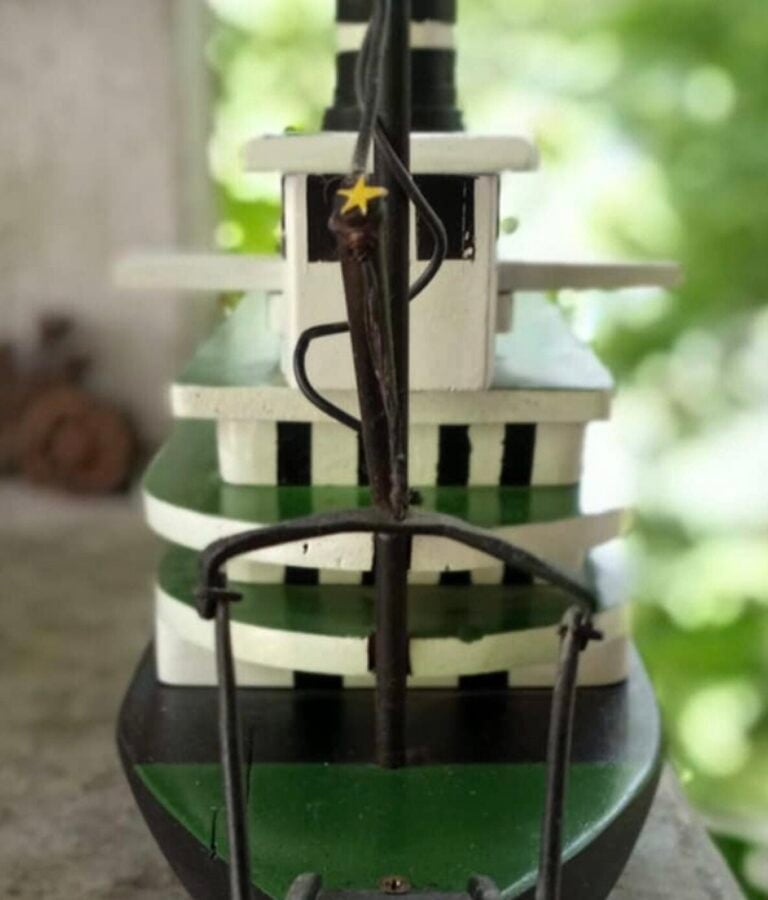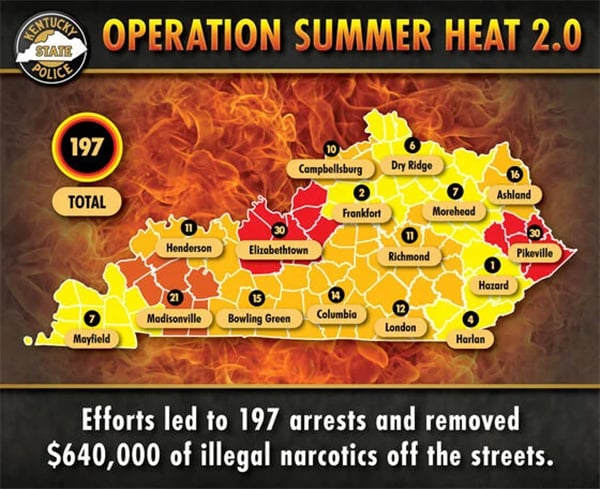Staff report
As Northern Kentuckians are reporting more and more sightings of coyotes in their neighborhoods, the Kentucky Department of Fish and Wildlife Resources says that coyotes are now seen in every county of the state — and that increased sightings are normal in winter and spring.
Not to worry — as long as you understand the nature of this very private creature and know how to behave when you see one.
“Don’t be afraid and don’t panic,” says Laura Palmer, KDFWr wildlife biologist. “There are many unfortunate misconceptions about coyotes, but conflicts can be easily avoided by having a basic understating of these wild animals.”
These days, coyotes are roaming more to search for mates, establish territories, and raise pups.
The coyote winter mating season typically lasts into March, while pup-rearing takes place in spring and early summer.
“People may worry when they think there are coyotes living near them, but there’s usually no cause for alarm if you see one,” said Palmer. “Like other wildlife that live in and around neighborhoods and farms, and even in urban areas, coyotes are shy and will typically avoid humans.”

A member of the canine family, coyotes have been common in Kentucky for at least the past 50 years after spreading out across North America from the interior plains. Found in every state except Hawaii, and in every Kentucky county, most coyotes do not bother people, livestock, or pets and most people do not even know coyotes are living near their homes.
Coyotes can live in any habitat from Alaska to Mexico, and have a varied diet consisting mostly of rodents, insects and fruit. They help maintain a natural balance in the ecosystem by providing natural rodent and insect control, scavenging and removing carrion from the environment, seed dispersal and more.
They are mostly monogamous and form lasting pair bonds to raise their pups in established territories. Although coyotes are generally timid and wary of people, encounters with people and pets can arise as they go about foraging, protecting their dens and feeding their pups.
Most coyotes do not cause conflict, but the ones that do may be removed individually by a licensed nuisance wildlife control operator, when necessary. Coyotes may also be hunted year-round, with no limit, with the appropriate hunting license and as allowed by local ordinances. Information and resources are available on the Kentucky Fish and Wildlife Coyotes webpage.

Coyotes are common thoughout Kentucky, including in suburbs, though you may not be aware that they live nearby.
Coyotes are omnivorous and eat a wide variety of foods, including mice, rabbits, frogs, insects, carrion, goose eggs, and fruit. If natural foods are limited, they may take advantage of dog food, garden fruits such as watermelon and strawberries, and garbage. Secure garbage, take pet food inside and don’t feed raccoons, opossums, deer, or feral cats.
Decrease Conflicts With Coyotes
The best way to decrease human and coyote conflict is not to feed coyotes — intentionally or unintentionally. Discourage your neighbors from feeding coyotes, feral cat colonies, or other wildlife. When coyotes come too close or appear aggressive or have lost their fear of humans, it is often the result of being fed.
The following are common types of outdoor food sources for coyotes:
• Bird feeders attract squirrels, mice, raccoons, and opossums, which in turn, attract coyotes. Bring bird feeders inside at night and remove the seed that falls on the ground, or do not use feeders when coyotes are in the area.
• Do not leave pet food outside. If you have to feed your pet outside, only give them the amount of food they can eat in one sitting.
• Secure garbage containers and compost bins.
• Fence gardens and compost piles.
• Keep BBQ grills clean, including the grease trap.
• In addition to providing food, your outdoor space should be secured. If you have pets or small children, this is even more essential.
• Plug holes under fences and block access to crawlspaces under outdoor buildings, porches, and the house.
• Install rolling fence toppers to help keep coyotes and pests out of your yard.
• Install motion-sensitive lighting around the house or turn on outside lighting and make sure the area is clear before letting a dog outside at night.
• Supervise pets while they are in the yard. Coyotes can climb over or dig beneath most fencing. Unattended pets should be kenneled.
• If you have a dog, be sure to walk your dog on a short, non-retractable leash that is highly visible to the coyote; they are less likely to attack a dog if they see it as part of you.
• Do not walk your dog at the same time or on the same route every day. Coyotes learn patterns.
• Always clean up dog droppings, as they will attract coyotes.
• Do not let your dog chase a coyote; the coyote will defend itself, and your dog may be injured.
• Cats are often easy targets for coyotes; therefore, do not let cats outside, especially without supervision.
• Small children should never be left unattended. Teach children never to approach a coyote or run from one; instead, use hazing techniques.
• Encourage your neighbors to follow these guidelines.
Keeping coyotes wild and wary of humans is a community effort. Visit urbancoyoteresearch.com for more information.


















It’s scary to hear them on the property I’m on. They seem to have overpopulated. When sirens go off, it’s then I realize how surrounded I am. To hear them drag a animal down the hill while the animal is screaming they sound to be laughing like hyenas, it’s the eeriest feeling I’ve ever felt chill my bones. I will not go out nor let my dog’s out at night anymore